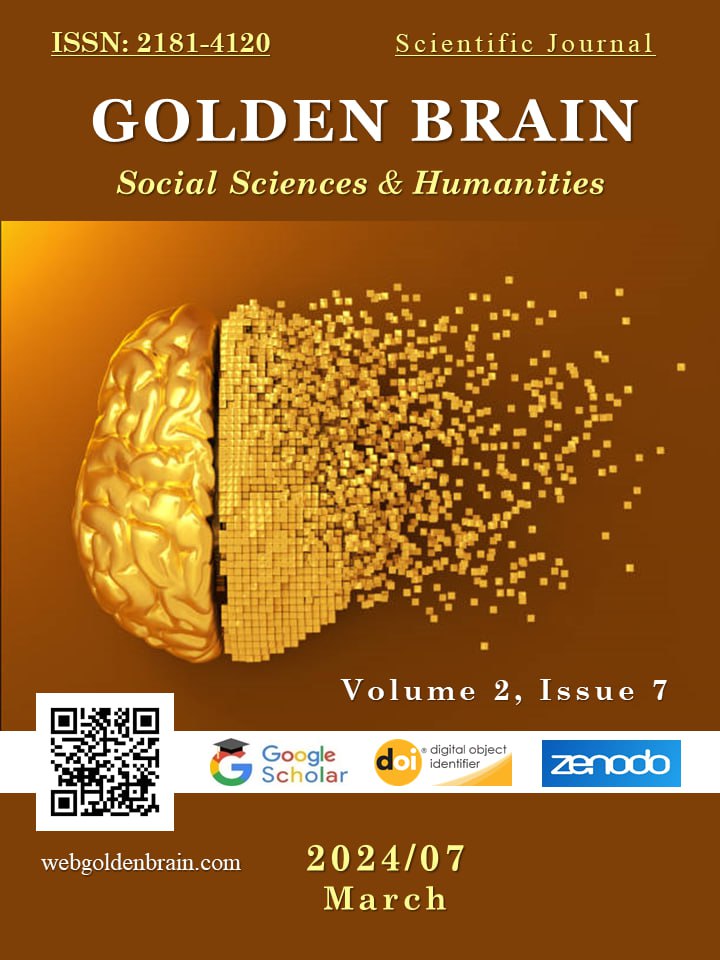THE IMPACT OF PATTERNS ON THE PROCESS OF INTERCULTURAL COMMUNICATION
Main Article Content
Abstract
The article devided into the complexities surrounding stereotypes and their impact on the pedagogy of intercultural communication. It underscores how stereotypes can precipitate discrimination, whereby misconceptions and negative sentiments translate into unjust treatment of particular individuals or communities. However, the article posits that this detrimental cycle can be preempted through the adept integration of intercultural communication components within the curriculum of specialized educational institutions, such as schools and gymnasiums. This strategic inclusion aims to alleviate cultural shock and foster smoother interactions with native speakers in subsequent communicative endeavors.
Article Details

This work is licensed under a Creative Commons Attribution 4.0 International License.
How to Cite
References
Harlan Cleveland, "The Limits of Cultural Diversity", in Intercultural Communication: a Textbook, 9th ed., L.A. Samovar and R.E. Porter, eds. (Belmont, California: Wadsworth, 2000), 427.2.
Douglas Martin, Jackie Hutchison, Gillian Slessor, James Urquhart, Sheila J. Cunningham and Kenny Smith, "Spontaneous stereotyping through Cumulative cultural evolution," Psychological Science 25, № 9 (2014): 1777-86.
Jeffrey W. Sherman, Frederica R. Conry, and Carla J. Groom, "Revised coding Flexibility: Evidence for improved encoding of stereotype-defying information under cognitive load," Social cognition 22, № 2 (2004): 214-232.
Jeff Stone, Christian I. Lynch, Mike Schemeling, and John M. Darley, "The Impact of Stereotypical Threats on Black and White Athletic Performance," Journal of Personality and Social Psychology 77, № 6 (1999): 1213-1227.
Henry Tyfel and John C. Turner, "Integrative theory of intergroup conflict", Social psychology of intergroup relations 33, № 47 (1979): 74.
David M. Amodio, "The Neurology of Prejudice and stereotypes", Nature Reviews Neuroscience (2014): 670-82.
Carol Tavris and Elliot Aronson, Mistakes were made (but not by Me): Why We Justify Stupid Beliefs, Bad Decisions and Harmful Actions, (Houghton Mifflin Harcourt, 2008), 64.8.
Robert M.Baird and Stuart E. Rosenbaum, eds., Hatred, Bigotry and Prejudice: Definitions, Causes and Solutions, (Prometheus Books, 1999), 130.9
. Colin Simpson, "A Good Salary, depending on where you come from," theNational, April 27, 2012
Lorianne Roberson, Elizabeth A. Deutsch, Arthur P. Brief and Caryn J. Block, "The threat of stereotypes and the search for feedback in the workplace," Journal of Professional Behavior, 62, № 1 (2003): 176-188.
Gert H. Hofstede, ed. The Consequences of Culture: Comparing Values, Behaviors, Institutions and Organizations in different Countries, (Thousand Oaks CA: Sage Publications, Inc., 2001), 14.
https://app.box.com/s / chapter-4-stereotypes.pdf
